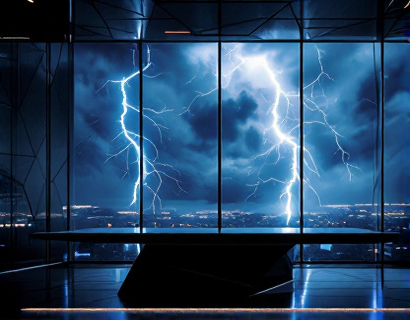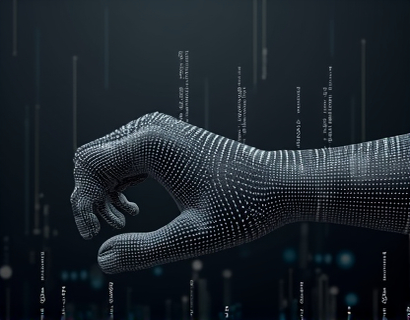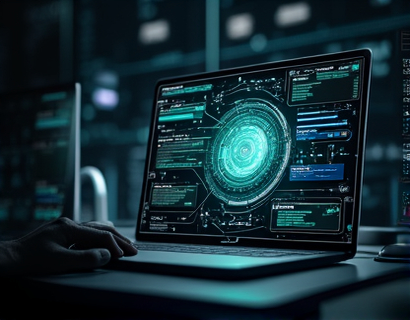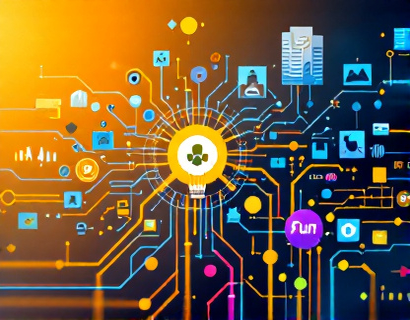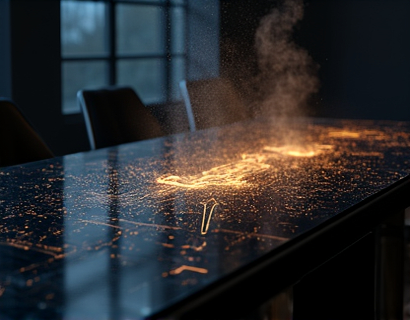Blockchain-Powered Notarization: Enhancing Document Security and Accessibility with Decentralized Trust
In the digital age, the need for secure and efficient document notarization has become more critical than ever. Traditional notarization processes, while established, often suffer from inefficiencies, lack of transparency, and vulnerabilities to tampering. Blockchain-powered notarization emerges as a transformative solution, leveraging the inherent properties of blockchain technology to enhance document security and accessibility. This article delves into the intricacies of how blockchain-driven notarization is revolutionizing the way legal professionals and businesses handle document authentication, ensuring integrity and trust through decentralized mechanisms.
Understanding Blockchain Technology
Before exploring the application of blockchain in notarization, it is essential to understand the fundamental concepts of blockchain technology. A blockchain is a distributed ledger that records transactions across multiple computers in such a way that the registered transactions cannot be altered retroactively. Each block in the chain contains a cryptographic hash of the previous block, a timestamp, and transaction data. This structure ensures that once data is recorded, it is immutable and transparent, providing a high level of security and trust.
Decentralized Trust in Notarization
Traditional notarization relies on a centralized authority, typically a government-appointed notary public, to verify the identity of the signatories and the authenticity of the document. While this approach has served its purpose, it is not without flaws. Centralized systems are prone to single points of failure, potential corruption, and delays. Blockchain-powered notarization addresses these issues by distributing trust across a network of nodes, eliminating the need for a central authority.
In a blockchain-based notarization system, the notary's role is transformed into a verifier of digital signatures and the integrity of the document. The notary signs a digital certificate that is then recorded on the blockchain. This certificate includes the document's hash, the notary's signature, and a timestamp. The decentralized nature of the blockchain ensures that multiple copies of this data are stored across the network, making it nearly impossible to alter or delete.
Enhanced Document Security
One of the primary advantages of blockchain-powered notarization is the significant enhancement in document security. The immutability of blockchain ensures that once a document is notarized and its hash is recorded, any attempt to alter the document will be immediately detectable. This is because changing the document would result in a different hash, which would not match the one stored on the blockchain.
Furthermore, the use of cryptographic techniques ensures that the document's integrity is maintained throughout its lifecycle. Each transaction, from the creation of the document to its notarization and subsequent access, is encrypted and linked to the previous transaction, forming an unbreakable chain. This level of security is particularly crucial for sensitive documents such as legal contracts, property deeds, and financial records.
Improved Accessibility and Efficiency
Blockchain-powered notarization not only enhances security but also improves the accessibility and efficiency of the notarization process. Traditional notarization often involves physical presence, lengthy processing times, and high costs. In contrast, blockchain-based notarization can be conducted remotely, providing instant verification and access to documents from anywhere in the world.
The process begins with the creation of a digital document, which is then hashed and submitted to the blockchain network. A notary, verified through a digital identity, reviews and signs the document. This digital signature, combined with the document's hash, is recorded on the blockchain. The entire process is automated and streamlined, reducing the time and cost associated with traditional notarization.
Transparency and Auditability
Transparency is a core feature of blockchain technology, and it plays a vital role in blockchain-powered notarization. Every step of the notarization process is recorded on the blockchain, creating a transparent and auditable trail. This transparency ensures that all parties involved can verify the authenticity and integrity of the document at any point in time.
For legal professionals and businesses, this level of transparency is invaluable. It reduces the risk of disputes and fraud, as the history of the document is easily traceable and verifiable. This is particularly beneficial in cross-border transactions, where different jurisdictions and legal systems may have varying standards and requirements.
Case Studies and Real-World Applications
Several organizations have already begun to implement blockchain-powered notarization, demonstrating its practical benefits. For instance, a legal firm in Europe used a blockchain-based platform to notarize international contracts, reducing the processing time from weeks to minutes. The clients reported higher satisfaction due to the convenience and security of the process.
In the real estate sector, a property management company in Asia adopted blockchain notarization for transferring property deeds. The company experienced a significant reduction in fraud cases and a smoother transaction process, leading to increased client trust and business growth.
Challenges and Considerations
While the benefits of blockchain-powered notarization are clear, there are several challenges and considerations that need to be addressed. One of the primary challenges is the regulatory landscape. Different countries have varying laws and regulations regarding digital signatures and notarization. Ensuring compliance with these regulations is crucial for the widespread adoption of blockchain-based notarization.
Another consideration is the technical expertise required to implement and maintain a blockchain-based notarization system. Organizations need to invest in training and infrastructure to support this technology. Additionally, user education is essential to ensure that all stakeholders understand the benefits and functionalities of the system.
Future Prospects
The future of blockchain-powered notarization looks promising, with ongoing developments aimed at addressing current challenges and expanding its applications. As more jurisdictions recognize and legalize digital notarization, the adoption of blockchain-based solutions is expected to grow. Integration with other blockchain applications, such as smart contracts, can further enhance the efficiency and automation of document management processes.
Moreover, advancements in blockchain technology, such as scalability solutions and interoperability standards, will make blockchain-based notarization more accessible and user-friendly. The potential for blockchain to revolutionize not only notarization but also other areas of legal and business operations is vast, making it a technology worth watching.
Conclusion
Blockchain-powered notarization represents a significant leap forward in document security and accessibility. By leveraging the decentralized and immutable nature of blockchain, this innovative approach provides a robust solution to the challenges faced by traditional notarization methods. For legal professionals and businesses seeking reliable and efficient notarization solutions, blockchain offers a transparent, secure, and convenient alternative. As the technology continues to evolve, its impact on various industries will only become more profound.



















